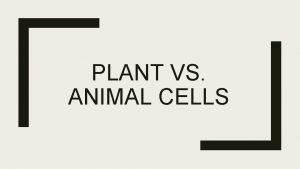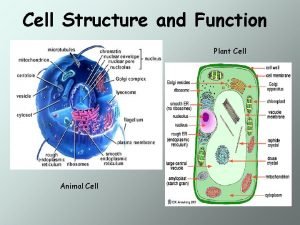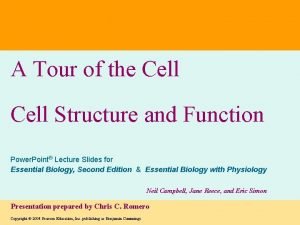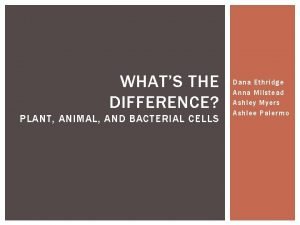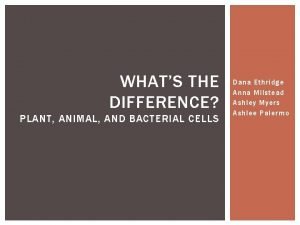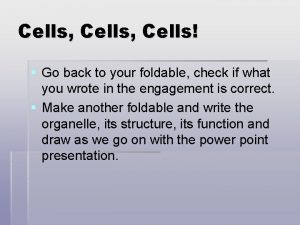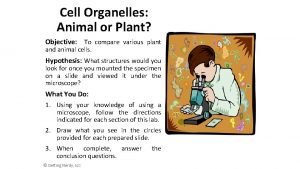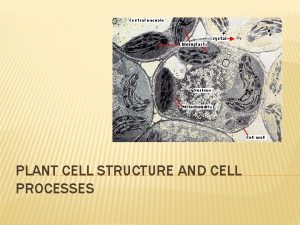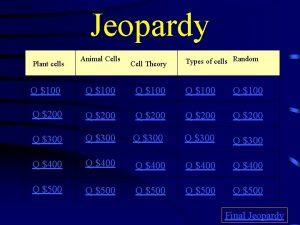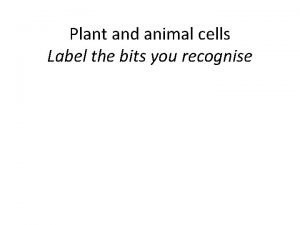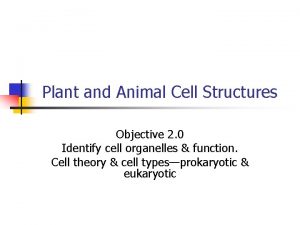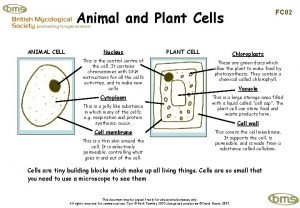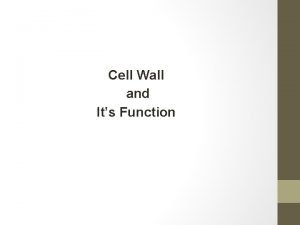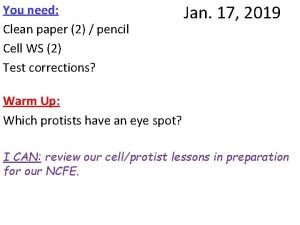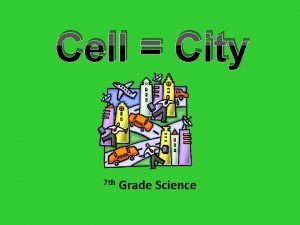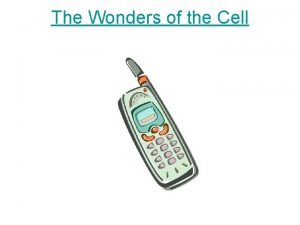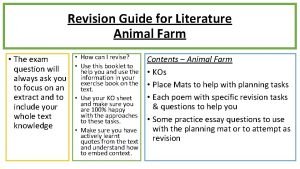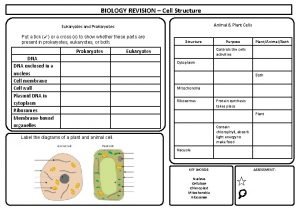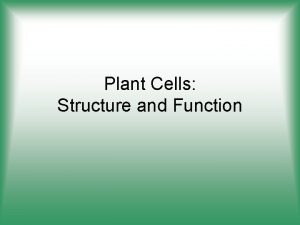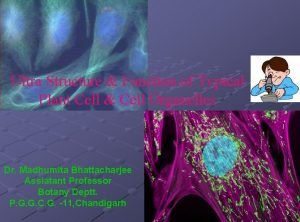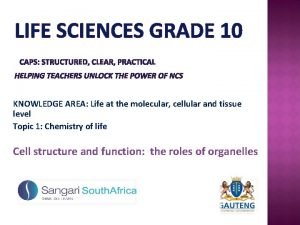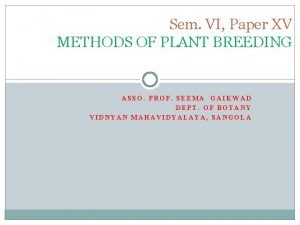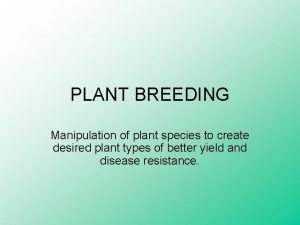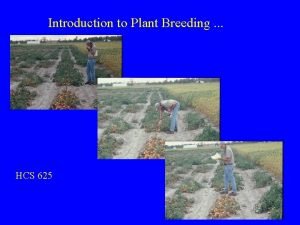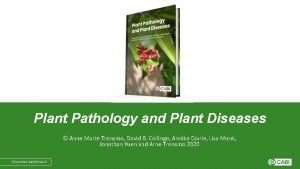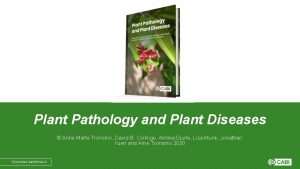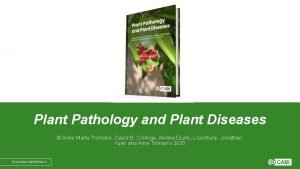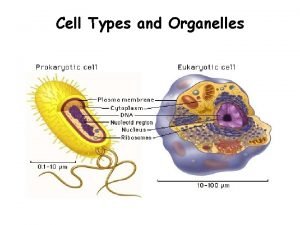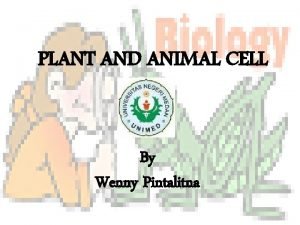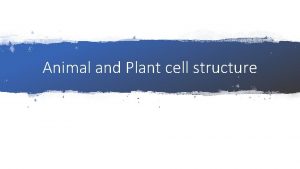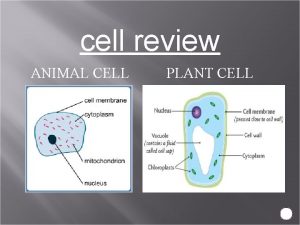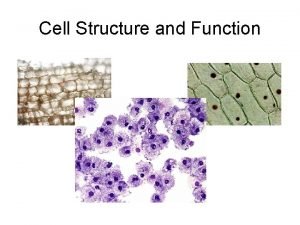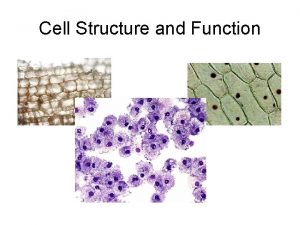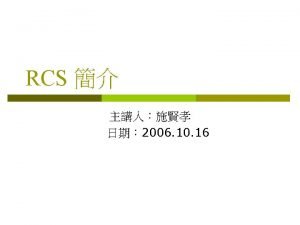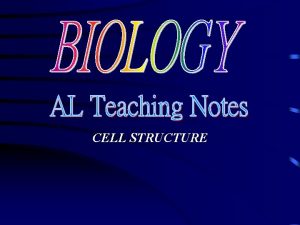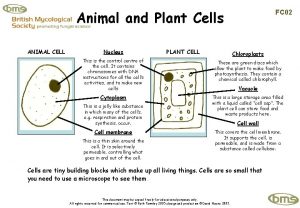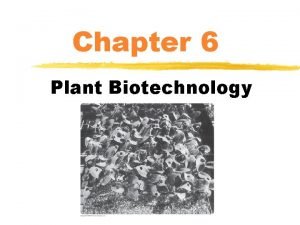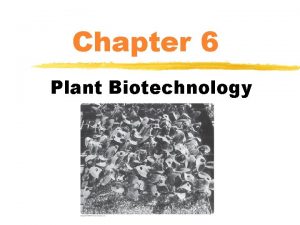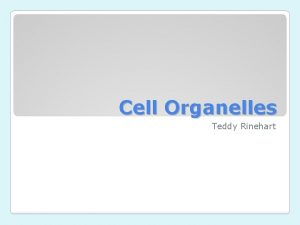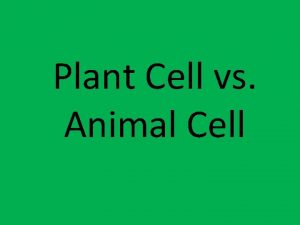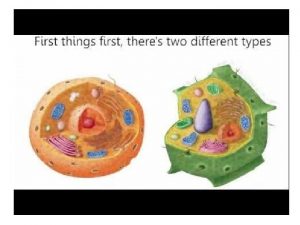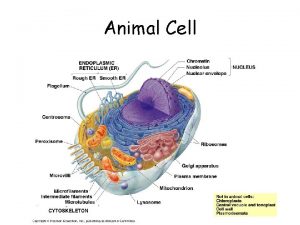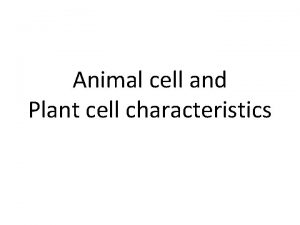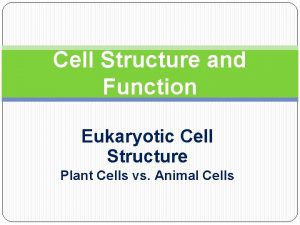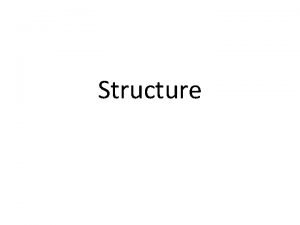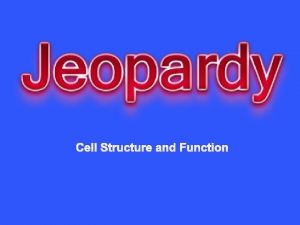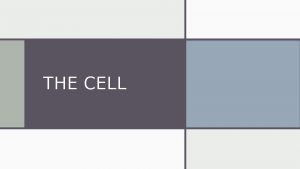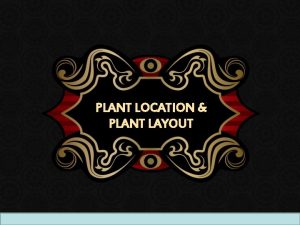Cell Structure Revision Animal Plant Animal Cell Plant



































- Slides: 35

Cell Structure

Revision Animal Plant

Animal Cell

Plant Cell

Organelles • Nucleus • Bounded by a double membrane with pores • Chromosomes in loosely coiled state called chromatin • Chromosomes contain DNA • Nucleolus – a dense body used to produce ribosomes • 6μm in diameter

Electron micrograph of a nucleus

Endoplasmic reticulum • Two types: 1. Rough endoplasmic reticulum (RER) 2. Smooth endoplasmic reticulum (SER)

Rough Endoplasmic Reticulum • Parallel flattened cavities lined with thin membranes 4 nm thick. • Attached to the membrane are ribosomes. • Used for protein transport


Smooth Endoplasmic Reticulum • Tubes rather than flattened stacks • Synthesis and transport of lipids and steroids


Golgi Apparatus • Stack of flattened cisternae • Formed by fusion of vesicles from the RER • Vesicles pinch off the trans face and move to the cell membrane.


Mitochondria • Diameter 1. 0 μm, length 2, 5 μm • Surrounded by 2 membranes • Inner membrane folded to form cristae • Matrix fluid inside • Used for producing ATP in aerobic respiration

• Contains circular DNA • Contains ribosomes (70 S)

Ribosomes • They are used for protein synthesis

• There are two types of ribosomes: • The smaller ones (70 S) are found in mitochondria and chloroplasts. • The larger ones (80 S) are found in the cytoplasm and attached to the RER

Lysosomes • Contain digestive enzymes. • Destroys bacteria • Destroys old organelles • Can destroy whole cell


Chloroplasts

• Double membrane • Inside is the stroma • Thylakoids are membranes stacked on top of each other to form a grana. • The membranes contain chlorophyll pigments 5 – 10 μm in length • Contains 70 S ribosomes and small circular DNA

Centrioles • A barrel shaped organelle found only in animal cells • Used in cell division. • It is a pin-wheel formation of 9 groups of 3 microtubules.


Microvilli • Minute projections of the cell wall • Increases surface area • 1 μm long and 0. 8 μm wide


Cell wall • Made of cellulose • Gives plant cells shape. • Can be lignified to make it even stronger.


Permanent Vacuole and Tonoplast • The tonoplast is a semi-permeable membrane surrounding the vacuole. • The vacuole stores food, water, and wastes. • It gives support to soft structures, such as leaves.


Plasmodesmata • Only found in plant cells • microscopic channels which traverse the cell walls of plant cells • enable transport and communication between them.


Cell Membrane

• a semi-permeable membrane

Prokaryotic Cells • Unicellular • 1 – 5 μm diameter • Lack membrane-bound organelles • Naked, circular DNA • 70 S ribosomes • Peptidoglycan cell walls

Peptidoglycan cell walls
 Plant cell animal cell venn diagram
Plant cell animal cell venn diagram What is an organelle
What is an organelle Vacuole function
Vacuole function Structure of animalcell
Structure of animalcell Idealized animal cell
Idealized animal cell Rigid outer covering of plant cells
Rigid outer covering of plant cells Active and passive vocabulary
Active and passive vocabulary Animal and plant cell similarities
Animal and plant cell similarities Difference between plant and animal cell
Difference between plant and animal cell Plant and animal cell foldable
Plant and animal cell foldable Plant and animal cell objectives
Plant and animal cell objectives Plant cell under electron microscope labelled
Plant cell under electron microscope labelled Plant or animal cell
Plant or animal cell Plant and animal cell jeopardy
Plant and animal cell jeopardy Cheek cell
Cheek cell Label a plant and animal cell
Label a plant and animal cell Typical animal cell
Typical animal cell Animal or plant cell
Animal or plant cell What is the function of a cell
What is the function of a cell Volvox diagram
Volvox diagram Cell city project animal cell
Cell city project animal cell Eukaryotic cell animal cell
Eukaryotic cell animal cell Stout motherly mare meaning
Stout motherly mare meaning When does respiration take place in animals and plants?
When does respiration take place in animals and plants? Eukaryotic plant cells
Eukaryotic plant cells Ultra structure of plant cell
Ultra structure of plant cell Animal cell structure grade 10
Animal cell structure grade 10 Plant introduction in plant breeding
Plant introduction in plant breeding Plant introduction in plant breeding
Plant introduction in plant breeding Plant introduction in plant breeding
Plant introduction in plant breeding Tronsmo plant pathology and plant diseases download
Tronsmo plant pathology and plant diseases download Tronsmo plant pathology and plant diseases download
Tronsmo plant pathology and plant diseases download Albugo eye
Albugo eye What cell type
What cell type Paragraph on animal cell
Paragraph on animal cell Plankton
Plankton
